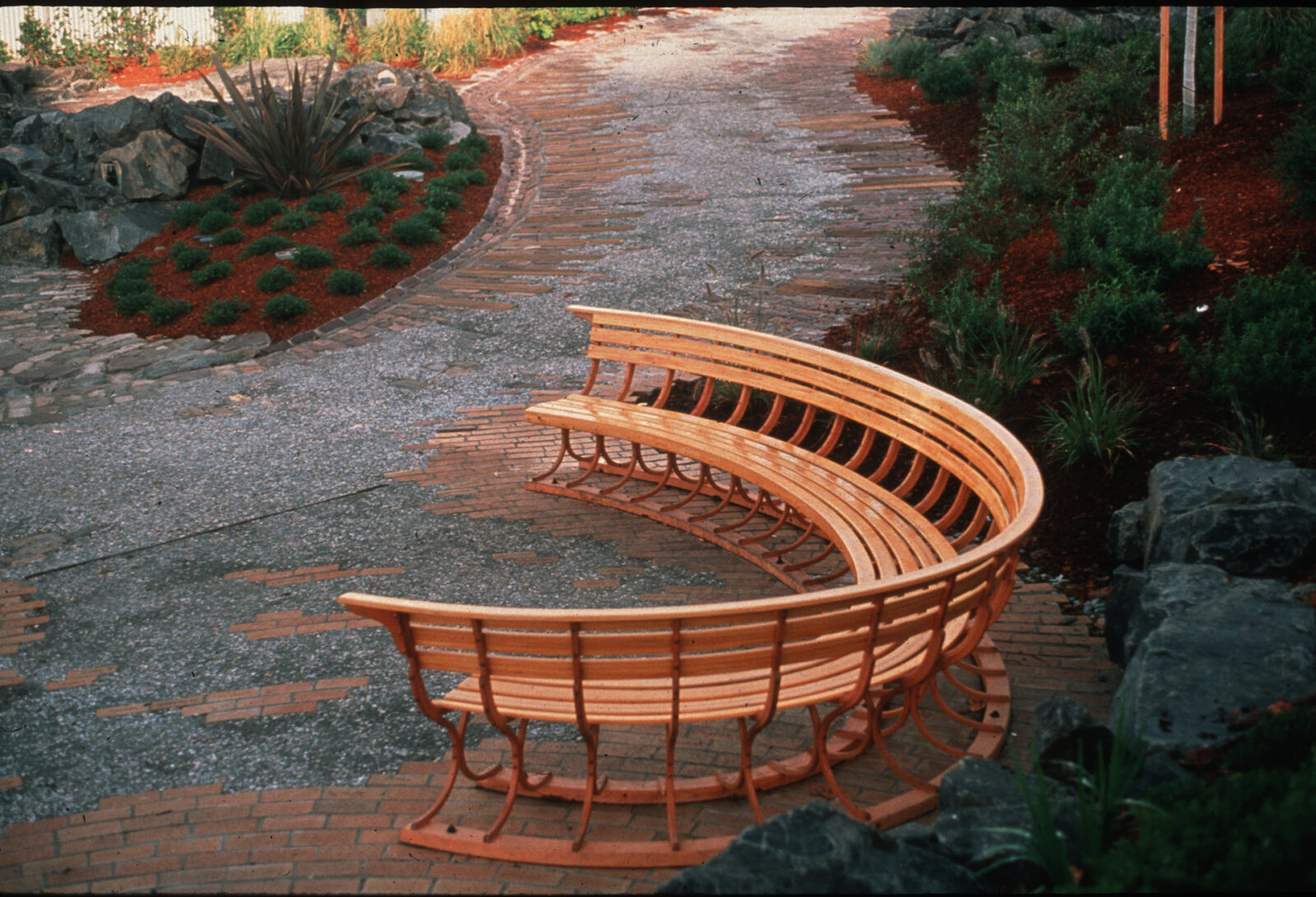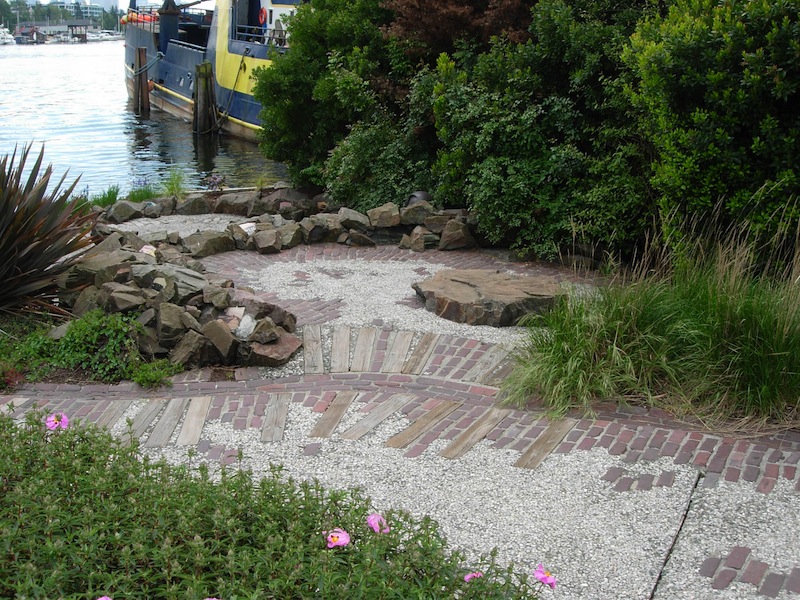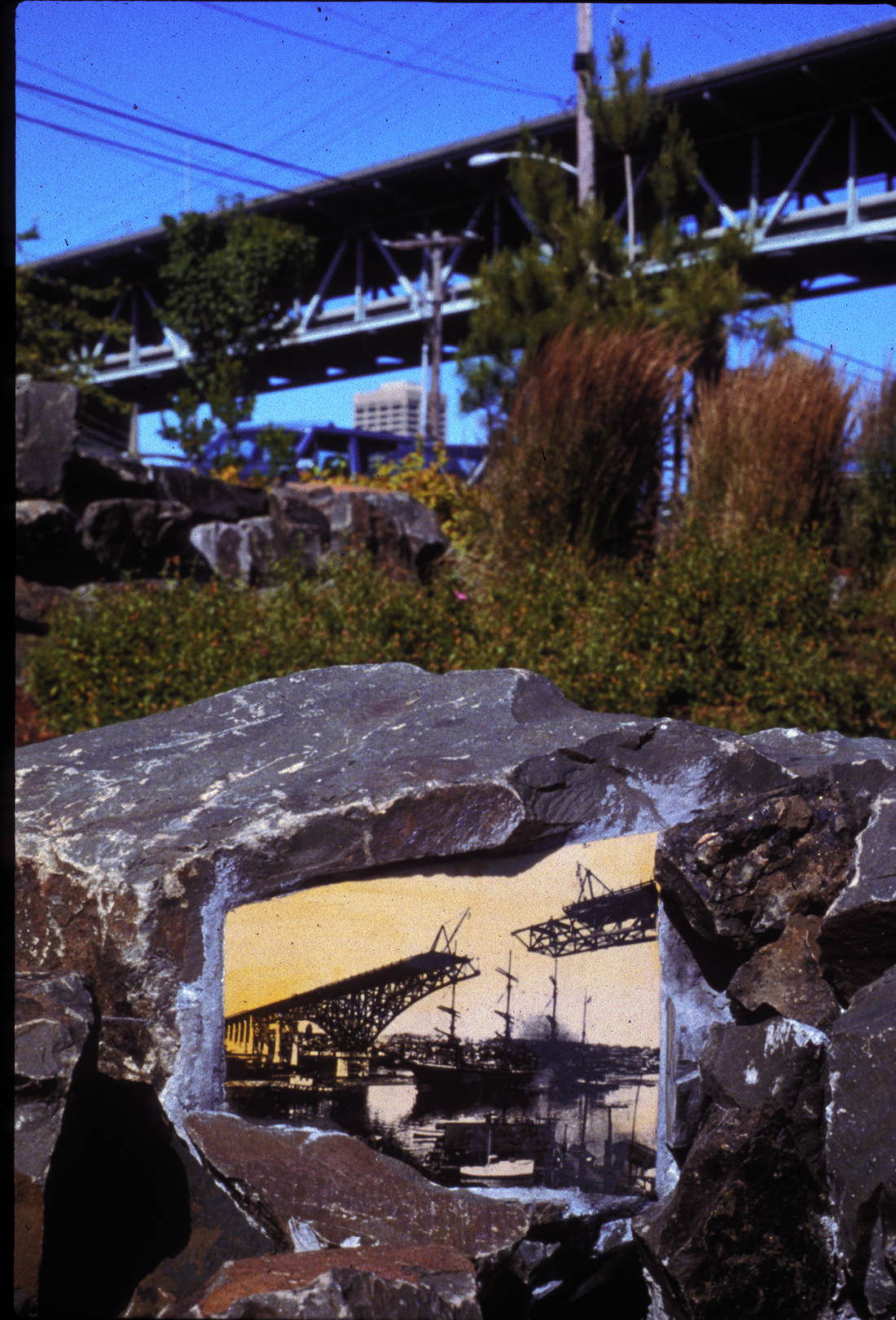Center for Wooden Boats Restores a Treasure on Lake Union

Hidden on the north side of Lake Union, next to Ivar’s and along the Burke-Gilman Trail, Waterway 15 celebrates the area’s maritime history and the public’s right to access commonly-held waters.
Like a pocket park, Waterway 15 is an artwork in the King County Public Art Collection. It was originally created as part of a 1990s restoration project related to a proposed stormwater pipeline from Green Lake Park to Lake Union. Due to public pressure to have a place to be near and on the water, the project was expanded to include a new waterway access point, with artist Elizabeth Conner and landscape architect Cliff Willwerth creating a design that honors the layers of history this site holds.
A highlight of Waterway 15 is a bench that Conner envisioned as a wooden boat under construction, which was designed and fabricated by Dick Wagner and Carl Lind at the Center for Wooden Boats, an organization dedicated to the tradition of building and sailing wooden boats. Approximately 16 feet long, the “boat bench” was moved to the Center for Wooden Boats’ facility in the fall of 2023 for restoration; it is expected to be reinstalled at Waterway 15 in fall 2024.

Led by woodworking programs manager Ducky Kimball, volunteers with the organization are currently refinishing the wood, completing another cycle of weathering and restoration on a piece first made by their community decades ago. Over the past 30 years, the Wagner family and the Center for Wooden Boats have dedicated innumerable hours to the restoration and cyclical maintenance of the “boat bench” – preserving a jewel of wooden boat technology for generations of visitors.
Conner and Willwerth’s design for Waterway 15 also included native plants, recycled paving materials that referenced the industrialization of the area, an artist-designed pipeline access hatch with a compass rose, and tiles featuring historic photographic images. Fabricated by artist Laura Brodax, these tiles illustrate the history of the site, including some of the first peoples of the area, who have used the lake since time immemorial, and who continue to steward the land we call home. (Pacific Northwest canoe culture will also be celebrated at the Northwest Native Canoe Center, which is currently being designed for the south end of Lake Union, led by the United Indians of All Tribes Foundation.)

At the time of its design in 1992, Waterway 15 provided one of the only public access points to Lake Union; today, there are many access points along the Cheshiahud Lake Union Loop, a trail named in honor of Cheshiahud, one of the leaders of the Duwamish villages located along what is now known as Lake Union. In the mid-1850s, Cheshiahud acted as a guide to early settlers in the area and he continued to live along the lake well into the 1900s.
Waterway 15 honors the waters of Lake Union, the many histories of this area, and the wooden vessels that once made travel possible across this region. With the efforts and expertise of the Center for Wooden Boats community, this artist-designed space will continue to inspire visitors for years to come.
